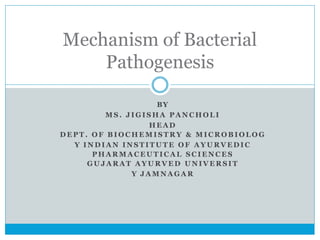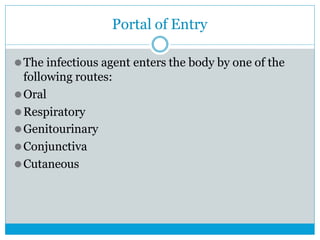Bacteria can exist as commensals, opportunistic pathogens, or pathogens in the host. Commensals live harmlessly, while opportunistic pathogens can cause disease when host resistance is low. Pathogens are capable of directly causing disease. Virulence refers to a bacteria's ability to cause disease and depends on factors like invasiveness and toxins. Bacteria can enter the host through various ports and have an incubation period before symptoms appear. They may exist as carriers or cause primary, secondary, or cross infections. Bacterial virulence factors include capsules, adhesins, exoenzymes, and toxins, which help bacteria evade the immune response or directly harm the host.






































